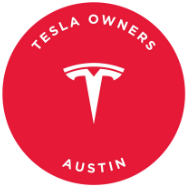As the auto industry grapples with uncertainty and volatility, carmakers are being forced to navigate a rapidly changing landscape. With tariffs in place, electric vehicle tax credits disappearing, and fuel economy regulations being rolled back, the industry is facing unprecedented challenges.
For years, car companies in America have been preparing for a future focused on electric and electrified vehicles. They have invested heavily in developing EVs and building U.S. battery plants to comply with stringent fuel economy and emissions regulations. However, the Trump administration’s policies have upended these plans, leaving carmakers in a state of flux.
The imposition of tariffs has further complicated matters, making it difficult for car companies to determine where to build cars and how to price them. With global supply chains still in disarray, the industry is struggling to adapt to the new reality.
According to analysts, the next few years will be the most uncertain and volatile time in product strategy ever. Car companies are being forced to plan day-to-day, with little long-term focus on technology, efficiency, and other factors that were once key considerations.
Creating a roadmap for the future has become an unenviable task for carmakers, as different markets are moving at different speeds toward new technologies. The question of whether to focus on gas, hybrid, or electric vehicles is no longer straightforward, as different segments of the market will demand a variety of powertrains.
As car companies grapple with these challenges, they are finding themselves at the mercy of external forces beyond their control. Negotiations and policy decisions are dictating their future, leaving them feeling like hostages in a game they did not sign up to play.
In conclusion, the auto industry is facing a period of unprecedented uncertainty and volatility, with carmakers struggling to adapt to rapidly changing regulations and market dynamics. The road ahead is fraught with challenges, but one thing is certain: the only constant in the carmaking game is change. Consumers simply can’t afford that, especially now in a global economy still reeling from the effects of the pandemic. The situation with Stellantis and Huawei in China is just the tip of the iceberg when it comes to the challenges facing the automotive industry.
Stellantis, a major player in the global automotive market, is facing a $2.7 billion tariff hit as it struggles with sagging sales and the impact of tariffs on its imported vehicles. The company has had to cancel programs, rethink future plans, and take pre-tax charges in response to the changing landscape. With over 40% of its vehicles sold in the United States being imported, Stellantis is feeling the pressure to recalibrate its production and employment to maintain profitability.
On the other side of the world, in China, Huawei is making waves in the EV market with its Harmony Intelligent Mobility Alliance. The tech giant is leveraging government subsidies to promote its HarmonyOS operating system and autonomous driving system in new vehicles. The Chinese government’s support for Huawei in this endeavor raises questions about the level of market intervention and competition in the rapidly growing EV sector.
Amidst all this chaos, there may be opportunities for savvy companies to innovate and succeed. The key to surviving and thriving in this tumultuous time will be finding ways to make cars more affordable for consumers. The industry as a whole needs to address the issue of affordability, whether through technological advancements, streamlined production processes, or strategic partnerships.
As the dust settles and the automotive industry adapts to the changing landscape, the companies that can navigate these challenges and capitalize on emerging opportunities will emerge as the winners in this current moment of industry chaos. It’s a time of uncertainty and upheaval, but for those with the vision and agility to seize the moment, there is potential for growth and success in the turbulent waters of the global automotive market.

